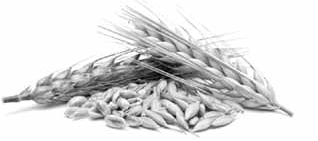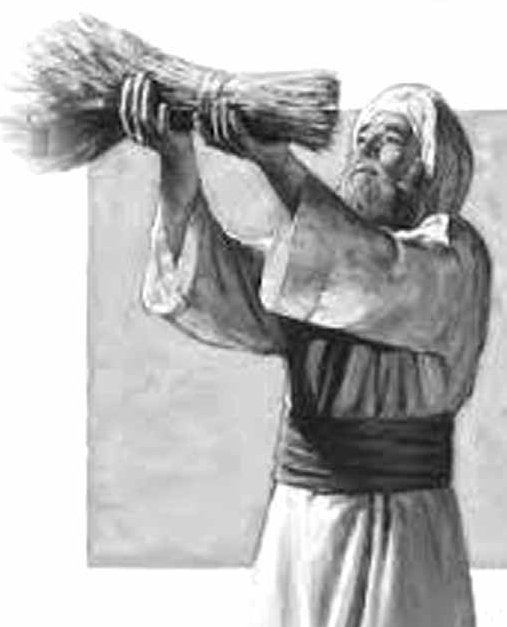Nisan 16
“And he shall wave the sheaf before the LORD, to be accepted for you: on the morrow after the sabbath the priest shall wave it” (Leviticus 23:11).
 This text speaks of Abib 16 (which we know better as Nisan 16, the month name drawn from the Babylonian month “Nisanu,” during Israel’s captivity). Leviticus 23:5 refers to Nisan 14, when the passover lamb was to be offered. Verse 6 refers to Nisan 15, the first day of the feast of unleavened bread. Verse 7 says that that day was to be observed as “an holy convocation,” or a day of sacred gathering of the people.
This text speaks of Abib 16 (which we know better as Nisan 16, the month name drawn from the Babylonian month “Nisanu,” during Israel’s captivity). Leviticus 23:5 refers to Nisan 14, when the passover lamb was to be offered. Verse 6 refers to Nisan 15, the first day of the feast of unleavened bread. Verse 7 says that that day was to be observed as “an holy convocation,” or a day of sacred gathering of the people.
The feasts of Israel were punctuated by such days of “holy convocation.” The first and seventh, or last, day of the annual feast of unleavened bread were to be days of “holy convocation” (Leviticus 23;7, 8). The annual feast of Tabernacles began on day one, and ended with day eight, as days of “holy convocation” (Leviticus 23:36, 37).
Pentecost, day 50 counting from Nisan 16, was also a day of “holy convocation” (Leviticus 23:16, 21).
The feast of trumpets, day 1 of month seven, was “a memorial of blowing of trumpets, an holy convocation” (Leviticus 23:245). The Day of Atonement, on day 10 of month seven, was “an holy convocation” (Leviticus 23:27).
However, this description is missing for Nisan 16, which was designated to be for waving the first fruit of the annual harvest, unto Jehovah, as a thanksgiving and praise to Him for his goodness to Israel. Why, in this case, was the day not also designated one of “holy convocation,” inasmuch as it was so notable a day? It was not only a day of thanks for God’s goodness, it was also the first of the 50 days counting toward Pentecost.
THE ANTITYPE
The antitype of this day is even more compelling. It represents Jesus, raised from the dead, as the very first fruitage of all, in God’s Divine Plan. Paul makes this connection in 1 Corinthians 15:20. “Now is Christ risen from the dead, and become the firstfruits of them that slept.”
The crop waved before God on this day was barley, which elsewhere also represents Jesus. In Judges 7:13, a barley loaf was symbolic of Gideon, who is a picture of our Lord Jesus, and his triumph over the Midianites is a symbol of Jesus’ victory over the enemies of God.
At the feeding of the 5000, representing the nourishment of the saints from the spiritual “feeding” of the first advent, John 6:9 specifies that the bread involved was from “barley loaves,” and later in verse 51 Jesus said, “the bread that I will give is my flesh, which I will give for the life of the world.”
The firstfruit of the barley harvest was waved before God on Nisan 16, “the morrow after the sabbath” (Leviticus 23:11) — this sabbath referring to Nisan 15, the day following the offering of the passover lamb. Jesus was offered as our passover lamb on Friday Nisan 14, he rested in the grave during the “sabbath” of Nisan 15, and was raised on the “morrow after the sabbath,” early in the morning of Sunday, Nisan 16, on the same day that the Law appointed for the waving of this firstfruit offering.
This waving was to be of “the sheaf,” that is, freshly cut barley without other preparation, baking, or mixing. Jesus was like that, freshly raised from the tomb to everlasting life, without any further preparation. This was distinct, for example, from the later offering at Pentecost of two waves loaves, baked with leaven, a picture of the Church beginning with Pentecost. For we all have leaven within us, and require processing first in order to be accepted by God. But with Jesus at his resurrection, all was perfect, clean, pure, and naturally acceptable to God without anything further.
WHY NOT A DAY OF HOLY CONVOCATION?
This heightens the question — why was this remarkable day, prefiguring the raising of Jesus from the dead, not also a day of “holy convocation”? It was perhaps an exceedingly important day not only for Jesus, and for the saints who would be blessed from our risen Lord, but for the entire human race.

Waving the barley sheaf in thanks to God
Perhaps the reason is that in the fulfillment, no one was aware, in order to be gathered in anticipation for this glorious raising. In spite of the fact that Jesus had told them that he would be raised the third day, they did not understand his meaning. Jesus had been very direct in telling them that he would die at Jerusalem (Matthew 20:18, 19), but apparently they did not grasp that he was speaking plainly of things to happen in the then near future. They likewise did not grasp the clear words about the time of his resurrection.
Thus there was no gathering at the tomb early in the morning in anticipation. The women who came early to the site came not to celebrate, but to complete the burial arrangements. The disciples did not rise early with hope and expectation, but only later when informed that Jesus was missing.
John had outrun Peter to the tomb. Pausing at the entrance, stooping down, he observed the “linen clothes lying” (John 20:5), and “the napkin, that was about his head … wrapped together in a place by itself” (verse 7). Then the precious realization — “he saw, and believed” (verse 8).
The day was not anticipated. None awaited the celebration. None prepared for the occasion. No “holy convocation” was assembled in joyful preparation. The most wonderful day of history came with surprise.
— Summarized from a recent service by Br. Harry Wildblood
